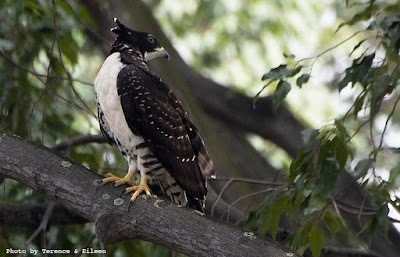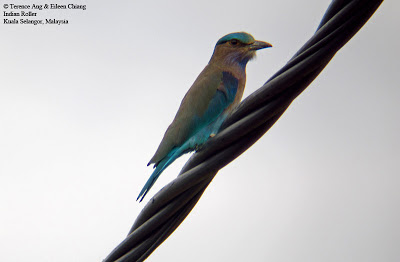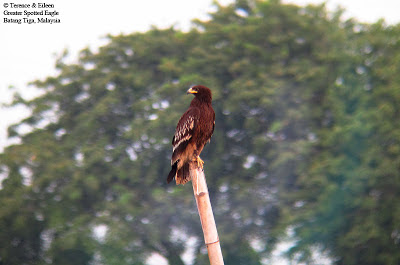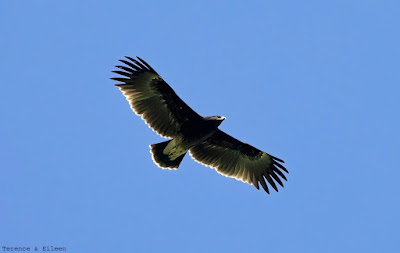Indomalayan Honey Buzzard (Subspecies torquatus) Lesson 1831
Interestingly that the torquatus subspecies was discovered 10 years after the nominate subspecies the orientalis (temminck 1821). This come to 201 years old after the species were discovered. Still the torquatus remain much of a mystery. Previously all lump into Oriental Honey Buzzard however these days many taxon are splitting this group out. Making the country -depending on taxon- we currently have 3 subspecies. The orientalis, torquatus and ruficollis. Only the torquatus race have been documented nesting in the country. Rarest of all the ruficollis remain one of the hardest to encounter among the three. In addition, though the name have the word buzzard but they are actually more closely related to kite rather than buteo buzzard. Differing from their other cousin, crest seem to be prominent to this subspecies. There is never depending on individual.
Having said that, approximately 10 years or more ago I mention in one of my posting that this subspecies were found to be more common after crossing the main range to east coast of P.Malaysia. This was obtain through a nation wide survey for raptor and their subspecies. In approximately 5-7 years back we notice that this species are crossing the main range. Very regular sighting and increase in number in east west highway and hill station. Today nest can be found in west coast in housing area, park and garden with heavily wooded area. Fascinating natural expansion for this species.
Similar to this recent discovery, we manage to locate 1 juvenile and both parent. Honestly I was sitting in a playground to get this story write up. Still don't ask me where is this location as I not sure at all. I was brought there and return home with Waze and I have no idea where I was. :( . I just know I need that bird.
2 nest was discovered matching the nest documentation for honey buzzard. This indicate the bird may have been nesting for more than one season. the local seem to know and aware of the bird around. Nesting season are usually said to be June-mid September and April to august in India. Nevertheless documentation show that in south India it start in February. In norm many species of raptor date delay as it move south however this was not the case. Perhaps aligning the nesting to February - June where it come to the fruiting season allowing higher food abundance for this species e.g bees, insect and more honey. Don't forget the success rate for hunting by this species is 90% failure. Honey become the replacement and if you are curious why they eat honey compare to other birds or prey.
When we are looking at the nest structure many of the nest record were from 15-20 meter while record from India range to 25 meter. This one both structure observed were within 25-30meter. Not surprising at there is no suitable fork for them bird to nest within the 25 meter range. However the similarity on this nest and other were
The individual observed here are still in his dependency period. By record the dependency period is within 5-8 week therefore this individual is fresh out from nest no more than 8 week. Today observation show that it is already very dependent. parent are hardly within the area monitoring the bird. Nevertheless both parent keep an close eye to the individual. Below is photo of a female.
The juvenile was wandering around the area and show no sign of concern with traffic and also human running around. In addition to this ground hunting was also observed for the juvenile. In the first place hunting on ground is not unusual for this species. In many location including Taiwan observation of the Honey Buzzard hunting on the ground was observed. Here we observed as a start the juvenile move from cable to tree before going to ground. Each of this the bird waited for a few minute. Once on the ground the Honey Buzzard was observed moving around on the ground which I believe looking for insect on the ground. The bird stood on the ground for a while before flew to the nearby tree. It was hours again before we come into range for any photo to be taken.
To add on, this time around we also observed the juvenile pulling off mushroom from a tree. I try referring to available reference and text available, there is no available text discussing on this behaviour. There is no evidence before this nor any video documentation where I can refer too. Any information on this will be greatly appreciated.


















Very good article explained, learn lot. Thanks🙏🏻
ReplyDeleteThanks a lot Ken Wong. Glad it is beneficial and you enjoy it
DeleteThank you Ken Wong. glad you like it and benefited from it
ReplyDelete